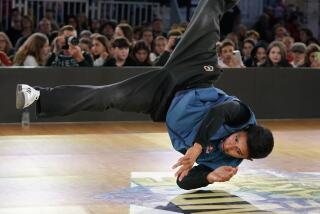Skeleton Is No Joke to Competitors
The first thing that needs to be cleared up about the Olympic sport of skeleton is that it is not named after the late comedian named Red.
Red Skelton, of course, would have loved using his namesake sport for material. After all, what sort of person would climb onto a little sled, three feet long and 16 inches wide, and hurtle head-first down a banked patch of ice as fast as 85 mph?
Red would talk about how these people didn’t have to worry about head injuries because they already had some. He could poke fun at moms and dads who take their children to toboggan runs, labeling it child abuse.
But for the handful of people worldwide who do this on an Olympic level, the sport of skeleton is no joke. In fact, it was so serious to U.S. competitors that they refused to talk to the press earlier this week.
They apparently have heard all those football and basketball and baseball players, babbling on about “staying focused,” whatever that means.
The focus for skeleton competitors will be fairly simple. Get a fast start in your special spiked shoes, running while lugging the 70- to 115-pound sled--weight depends on the slider’s body weight--for a 50-meter sprint at the top of the run, and then somehow plop down on it and tuck all body parts in before you hit the first big bank.
Your plop-down needs to be smooth. Your uniform needs to be skintight material, usually rubber, for the best aerodynamics.
The steering is done by shifting weight, mostly knees. Additional steering is done by the tips of the toes, but that is more slowing than steering, and when the tips of toes are being used a lot, time is being lost. It helps if you have narrow shoulders, providing less wind resistance.
The sport is in the Olympics for only the third time, the first time for women. It was held in previous Olympics in 1928 and 1948, both in St. Moritz, Switzerland, site of the world-famous Cresta Run. Interestingly, in those two Olympics, Americans won one gold and two silvers to lead all countries.
Percentage-wise, skeleton is the Winter Games sport in which the United States is most dominant. Matter of fact, no other country and only one person has ever won a silver medal in skeleton, both of those going to John Heaton, in ’28 and ’48.
To qualify for the Olympics, a competitor must be at least 18 in the year the Games are being held. Most other Olympic sports have no age qualification.
Also, competitors must have competed in at least five international events over the last two years on at least three different tracks. That is no easy feat since there are only two certified tracks in the United States, at Utah Olympic Park near Park City and at Lake Placid, N.Y.
Many countries are at a natural disadvantage when it comes to skeleton. For example, how many skeleton runs do you suppose there are in Guatemala?
At all five international competitions, competitors must produce results worthy of international ranking. Also, competitors’ countries must be members of the International Bobsleigh and Skeleton Federation, something the U.S. joined in 1923.
Three U.S. men are entered, led by Jim Shea, whose grandfather and father competed in Winter Games and whose grandfather died recently after a car crash.
Otherwise, there would have been three generations of Sheas in Salt Lake City for the skeleton competition, two watching and one sliding. Jim Shea will carry the funeral card from his grandfather’s service in his helmet.
The other U.S. men entered are Lincoln Dewitt and Chris Soule; the U.S. women are Gale Tristan and LeaAnn Parsley.
Parsley’s biography gives an indication of the type of person who embraces this sport. Listed among her aspirations is to become a smoke jumper, a person who parachutes into forest fires to help put them out.
There are no plans for future Olympics to follow the lead of luge, which has competition in singles and doubles.
Good thing, because doubles skeleton would be too much for Red to resist, were he alive today.
*
More to Read
Go beyond the scoreboard
Get the latest on L.A.'s teams in the daily Sports Report newsletter.
You may occasionally receive promotional content from the Los Angeles Times.







